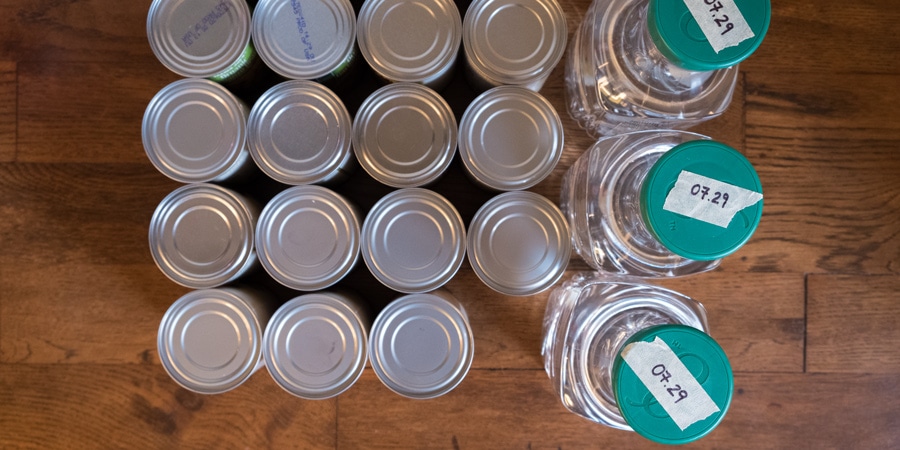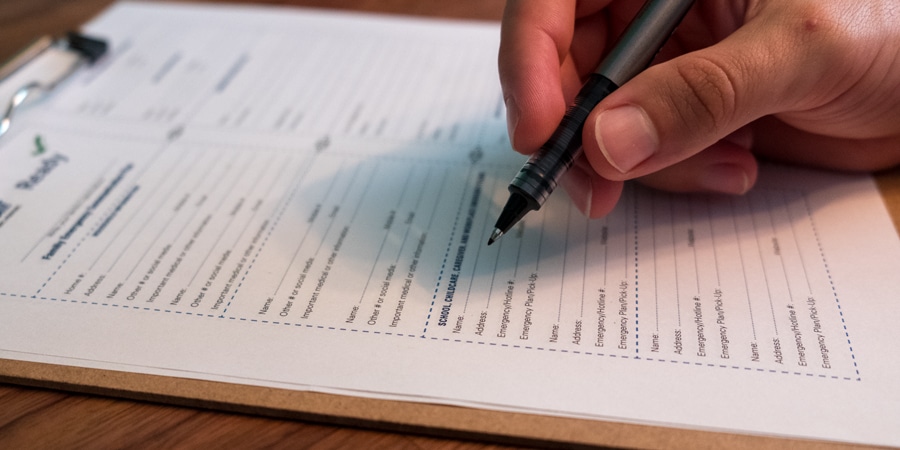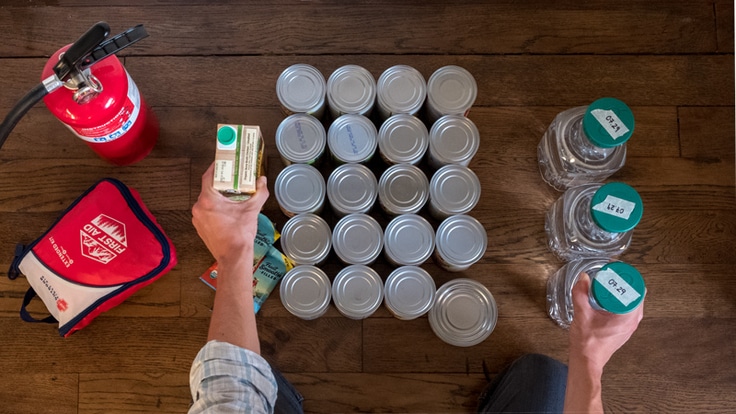Once you've put together your emergency kit, you can pat yourself on your back knowing that you'll be prepared for the unexpected. That said, you can only rest easy until it's time to update your kit, which you should do every six months. But here's the good news: Keeping that kit ready in the future takes much less time than putting it together in the first place.
Emergency kit maintenance involves four simple steps:
- Store your kit in a cool, dry place that's out of direct sunlight. The timelines in this article are based on following this guideline. Heat, moisture and UV rays can all reduce the shelf life of perishable items in your kit.
- Do a six-month check: Set up a calendar reminder for every six months. When that time arrives, check and replenish all expired food, water, medicines and other perishable supplies; also replace items that will expire within the next six months.
- Do a more thorough yearly check: Reassess what's in your kit and your emergency plan; update as needed to address changing family needs. Inspect all your gear to be sure everything is in working order.
- Take care of your kit as needed: If you ever take items out of your kit for any reason, promptly replace those supplies afterward—replace bandages taken out of a first-aid kit, for example.
Check Your Perishables

Both water and dehydrated or canned foods might be good for far longer than their expiration dates, but both are also critical for survival so you should keep them as fresh as possible. (If you were in an emergency, though, and realized you hadn't been diligent, it would be better to consume stale supplies than to go without.)
Food:
- Store boxed food in tightly closed, hard-sided containers to protect it from pests.
- Rotate stocks by placing new food at the front and removing older food from the back.
- Consume food that has an expiration date or a "best by" date within the next six months; then replace it with food that will remain good for longer than six months.
- Dispose of expired and damaged foods, including any canned goods that have become swollen, dented or corroded.
- If applicable, check infant formula, infant foods and pet foods to be sure none have expired or will expire within six months.
Water:
- Water stored in plastic containers should have a layer of cardboard or wood between those containers and concrete floors because the chemicals in concrete can leach into your stored water, fouling the taste.
- If you choose tap water rather than already bottled water, store your tap water in thoroughly washed, non-breakable containers.
- Replenish bottled water if it's past its expiration date, usually one or two years (water in bottles nearing expiration might have a plastic taste, but is still drinkable).
- Replenish water you've stored in your own containers every six months.
Medicines: Check and replace all that are past their expiration date; check both prescription meds and over-the-counter meds.
Bleach: Check the manufacture date and replace it if it's more than one year old.
Batteries:
- Check batteries and replace any that are leaking.
- Swap out any partially used batteries, replacing them with fresh ones.
- Replace even unused batteries every three to five years (some last longer, so check the packaging to be certain).
Fuels:
- White gas for a camp stove: Check with the manufacturer; a super-conservative approach is to replace even unopened cans every two years.
- Kerosene for a camp stove: Replace every year.
- Sealed fuel canister: The fuel itself can last for decades, but you do need to check that the canister isn't rusted or damaged.
- Stored gasoline for a generator: Replace every six months.
Fire Extinguisher: If yours has a gauge, check it to be sure the needle is in the green. Rechargeables need to be recharged every 10 years; disposables have a shelf life of about 10 years. Periodically inspect the condition of all hoses.
Do a Yearly Paperwork Update

Data has an expiration date, too, so keep yours fresh:
- Reassess and update your emergency plan: If you moved during the year, gathering places, evacuation routes and local shelter locations, for example, might have changed.
- Update your emergency contact info: Kids might have new caregivers with new phone numbers, for example.
- Review important documents: Update your prescription medication list yearly; also check other document copies in your kit: If you changed insurance companies, for example, add copies of new policies.

